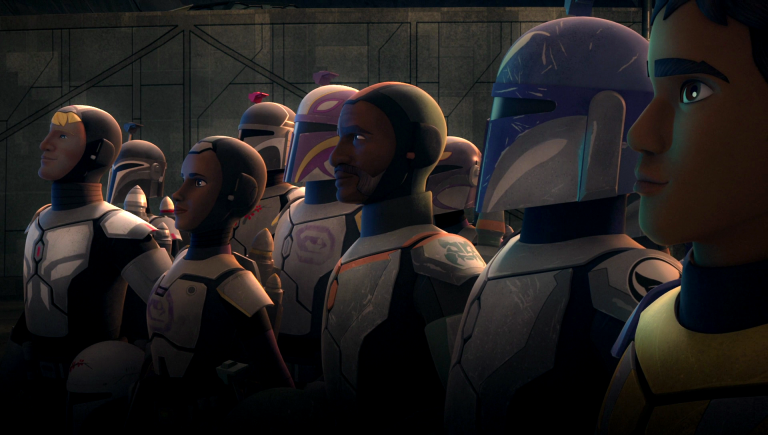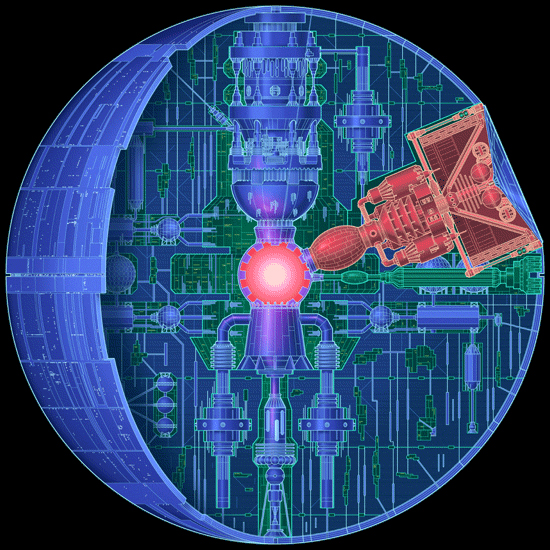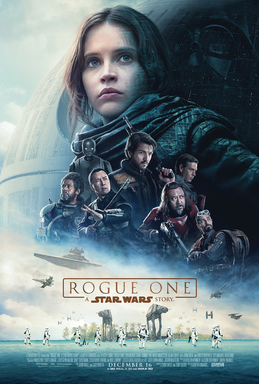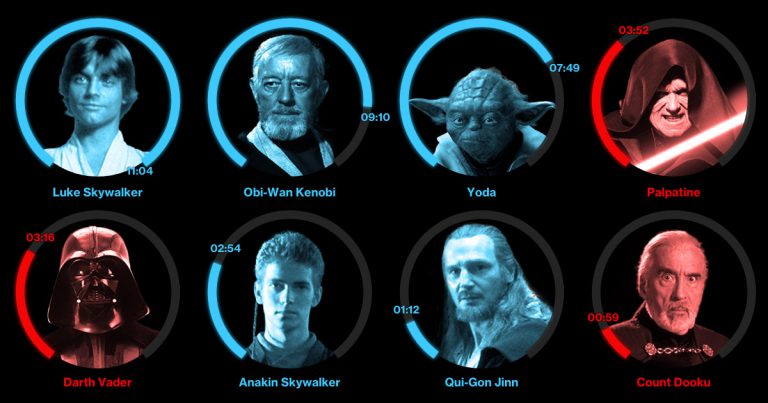What Is The Order Of The Star Wars Series?
Are you a die-hard Star Wars fan? Have you ever wondered what is the order of the Star Wars series? Well, look no further, because I’ve got all the answers for you! Whether you’re a Jedi master or a Padawan learner, understanding the chronological order of the Star Wars saga is essential for fully immersing yourself in the epic space opera. So, grab your lightsaber and let’s dive into a galaxy far, far away!
The Star Wars series is like a puzzle with multiple pieces that need to be put together in the right order. With various movies, TV shows, and spin-offs, it can be a bit confusing to figure out where it all fits. But fear not, my fellow Star Wars enthusiasts! I’m here to guide you through the warp speed journey of the Star Wars universe. From the original trilogy to the prequels, sequels, and standalone films, we’ll unravel the saga piece by piece, ensuring you don’t miss a single detail. So, get ready to embark on an adventure that will take you from the rise of Anakin Skywalker to the battle against the First Order. May the force be with you as we explore the order of the Star Wars series!

Understanding the Order of the Star Wars Series
Star Wars is one of the most beloved and iconic film franchises in the world. With its epic storytelling, memorable characters, and groundbreaking special effects, it has captured the hearts and imaginations of millions of fans. However, with numerous movies, TV shows, and spin-offs, it can be confusing to know the order in which to watch them. In this article, we will break down the chronological order of the Star Wars series, so you can fully immerse yourself in the galaxy far, far away.
The Original Trilogy: A New Hope, The Empire Strikes Back, Return of the Jedi
The Star Wars saga begins with the original trilogy, which consists of three films: “A New Hope,” “The Empire Strikes Back,” and “Return of the Jedi.” These films were released between 1977 and 1983 and introduced us to the timeless characters of Luke Skywalker, Princess Leia, Han Solo, and Darth Vader. “A New Hope” is Episode IV in the series, and it sets the stage for the battle between the Rebel Alliance and the evil Galactic Empire.
In “The Empire Strikes Back,” the story continues as Luke trains with Jedi Master Yoda and faces a shocking revelation about his true parentage. The film is often regarded as one of the best in the series, thanks to its dark tone and iconic moments, such as the reveal of Darth Vader’s true identity. Finally, “Return of the Jedi” brings the original trilogy to a satisfying conclusion, as Luke confronts Vader and the Emperor in a final battle for the fate of the galaxy.
Prequel Trilogy: The Phantom Menace, Attack of the Clones, Revenge of the Sith
The prequel trilogy takes place before the events of the original trilogy and delves into the backstory of Anakin Skywalker and the rise of Darth Vader. “The Phantom Menace” introduces us to a young Anakin, who is discovered by Jedi Knight Qui-Gon Jinn and his apprentice, Obi-Wan Kenobi. The film also introduces memorable characters like Padmé Amidala and the Sith Lord, Darth Maul.
In “Attack of the Clones,” Anakin has grown into a Jedi Knight and is assigned to protect Padmé, who has become a senator. The film explores their forbidden romance and the growing tensions in the galaxy as the Clone Wars begin. Finally, “Revenge of the Sith” depicts Anakin’s fall to the dark side and his transformation into Darth Vader. This trilogy provides crucial context and backstory to the events of the original trilogy.
Stand-Alone Films: Rogue One, Solo
In addition to the main saga, there are also stand-alone films that expand the Star Wars universe. “Rogue One” is a direct prequel to “A New Hope” and tells the story of the Rebel Alliance’s mission to steal the Death Star plans. It offers a grittier and more realistic take on the Star Wars universe and introduces new characters who play a crucial role in the overall narrative.
“Solo” is a spin-off film that explores the early years of Han Solo, the charming smuggler from the original trilogy. It delves into Han’s backstory, how he met Chewbacca and Lando Calrissian, and his adventures before joining the Rebellion. These stand-alone films provide a different perspective and expand the Star Wars lore beyond the main saga.
Watching Order: Chronological or Release Order?
When it comes to watching the Star Wars series, there are two main approaches: chronological order or release order. Chronological order follows the events of the story, starting with “The Phantom Menace” and ending with “The Rise of Skywalker.” This allows viewers to experience the story in the order it unfolds within the Star Wars universe. However, watching in chronological order may spoil certain surprises and reveals that were intended to be experienced in the release order.
On the other hand, release order follows the order in which the films were originally released. This means starting with “A New Hope” and ending with “The Rise of Skywalker.” Watching in release order allows you to experience the series as it was intended to be seen by the filmmakers and allows for the full impact of certain plot twists and character developments.
Ultimately, the choice between chronological order and release order is up to personal preference. Both approaches have their merits, and it can be interesting to watch the series in different ways to gain new insights and perspectives.
Additional Viewing Options: TV Shows and Spin-Offs
In addition to the films, there are also TV shows and spin-offs that expand the Star Wars universe even further. These include animated series like “Star Wars: The Clone Wars” and “Star Wars Rebels,” as well as the live-action series “The Mandalorian.” These shows provide additional depth and storytelling that complement the films and offer new adventures and characters to explore.
Furthermore, there are various spin-off novels, comic books, and video games that offer even more opportunities to delve into the Star Wars universe. These additional viewing options can enhance your overall Star Wars experience and provide a deeper understanding of the lore and mythology.
In conclusion, the order of the Star Wars series can be a bit confusing, but by following the chronological or release order, you can fully immerse yourself in the epic saga. Whether you choose to start with the original trilogy or dive into the prequels, the Star Wars universe offers a rich and captivating storytelling experience that continues to resonate with audiences of all ages. May the Force be with you as you embark on your Star Wars journey.
Key Takeaways: What is the Order of the Star Wars Series?
- The Star Wars series can be watched in chronological order or release order.
- Chronological order: Start with Episode I: The Phantom Menace and end with Episode IX: The Rise of Skywalker.
- Release order: Begin with Episode IV: A New Hope and finish with Episode IX: The Rise of Skywalker.
- There are also standalone films like Rogue One and Solo that can be watched in between.
- Both orders have their advantages – chronological order provides a complete story arc, while release order gives the original experience.
Frequently Asked Questions
1. What is the chronological order of the Star Wars series?
The Star Wars series can be quite confusing with its numerous films, spin-offs, and TV shows. However, if you want to watch the movies in chronological order, here’s the recommended sequence:
1. Episode I: The Phantom Menace (1999)
2. Episode II: Attack of the Clones (2002)
3. Episode III: Revenge of the Sith (2005)
4. Solo: A Star Wars Story (2018)
5. Rogue One: A Star Wars Story (2016)
6. Episode IV: A New Hope (1977)
7. Episode V: The Empire Strikes Back (1980)
8. Episode VI: Return of the Jedi (1983)
9. Episode VII: The Force Awakens (2015)
10. Episode VIII: The Last Jedi (2017)
11. Episode IX: The Rise of Skywalker (2019)
2. Should I watch the Star Wars movies in release order or chronological order?
Both release order and chronological order have their own merits. Watching in release order allows you to experience the series as it was originally intended and follow the story’s evolution. However, if you prefer a linear narrative and want to understand the story from beginning to end, watching in chronological order is recommended.
Ultimately, the choice depends on your personal preference. If you’re a die-hard Star Wars fan, you might enjoy watching in release order to fully grasp the cultural impact and development of the franchise. If you’re new to Star Wars and want a straightforward narrative, chronological order might be the way to go.
3. Are the Star Wars spin-off movies essential to the main storyline?
The Star Wars spin-off movies, such as “Solo: A Star Wars Story” and “Rogue One: A Star Wars Story,” provide additional context and expand on certain events within the main storyline. While they are not essential to understanding the main saga, they offer unique perspectives and enrich the overall Star Wars universe.
If you’re a dedicated fan looking for a deeper dive into the lore and backstory, watching the spin-off movies can enhance your viewing experience. However, if you’re primarily interested in the main saga, you can still enjoy the core story without watching the spin-offs.
4. Are there any TV shows that are part of the Star Wars series?
Yes, there are several TV shows that are part of the Star Wars series. Some notable ones include:
– “Star Wars: The Clone Wars” (2008-2020): An animated series set between Episode II and Episode III, expanding on the events of the Clone Wars.
– “Star Wars Rebels” (2014-2018): Another animated series set between Episode III and Episode IV, following a group of rebels fighting against the Empire.
– “The Mandalorian” (2019-present): A live-action series set after the events of Episode VI, featuring the adventures of a bounty hunter in the Star Wars universe.
These TV shows offer additional stories and characters that complement the movies, providing a more comprehensive viewing experience for fans.
5. Are there any upcoming Star Wars projects to look forward to?
Yes, there are several upcoming Star Wars projects in the pipeline. Some of the highly anticipated ones include:
– “Star Wars: The Bad Batch” (2021): An animated series following the elite and experimental clones of the Bad Batch.
– “Star Wars: Visions” (2021): An upcoming anthology series featuring short films by various anime creators, exploring different corners of the Star Wars galaxy.
– “Star Wars: Ahsoka” (TBA): A live-action series centered around the character Ahsoka Tano, played by Rosario Dawson, who debuted in “The Mandalorian.”
– “Star Wars: Rangers of the New Republic” (TBA): Another live-action series set within the timeline of “The Mandalorian,” focusing on the adventures of new characters.
These upcoming projects promise to expand the Star Wars universe even further and offer exciting new stories for fans to enjoy.
STAR WARS BEST WATCH ORDER? All Movies + Mandalorian + Clone Wars & Rebels!
Final Summary: Unraveling the Order of the Star Wars Series
So, there you have it—the ultimate guide to understanding the order of the Star Wars series. From the original trilogy to the prequels and sequels, this beloved franchise has captivated audiences for decades. Whether you’re a die-hard fan or a newcomer to the Star Wars universe, knowing the chronological order of the movies is essential for fully immersing yourself in the epic saga.
Starting with “Episode IV: A New Hope,” you’ll be transported to a galaxy far, far away and introduced to iconic characters like Luke Skywalker, Princess Leia, and Han Solo. The original trilogy is a must-watch for any Star Wars enthusiast, as it lays the foundation for the entire saga. Next, delve into the prequels—Episodes I, II, and III—to learn the backstory of Anakin Skywalker, his transformation into Darth Vader, and the events that led to the rise of the Empire.
Once you’ve experienced the main storyline, it’s time to explore the sequels, which pick up after the events of the original trilogy. Episodes VII, VIII, and IX continue the epic battle between the Resistance and the First Order, introducing new heroes and villains along the way. And if you’re hungry for more Star Wars content, don’t forget to check out the standalone films and animated series that expand the universe even further.
In conclusion, understanding the order of the Star Wars series is crucial for fully immersing yourself in the epic saga. By following the chronological sequence of the movies, you’ll witness the rise and fall of the Empire, the hero’s journey of Luke Skywalker, and the ongoing battle between the light and dark sides of the Force. May the Force be with you as you embark on this thrilling cinematic adventure!






